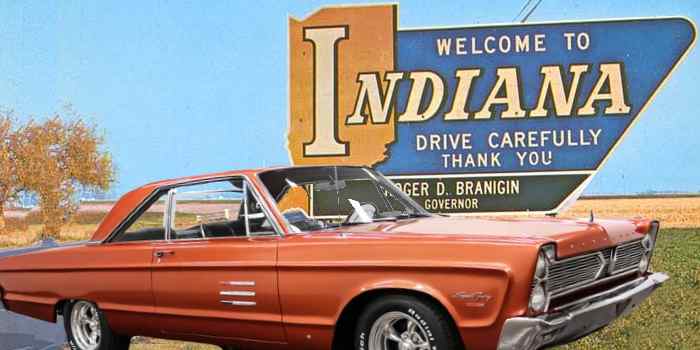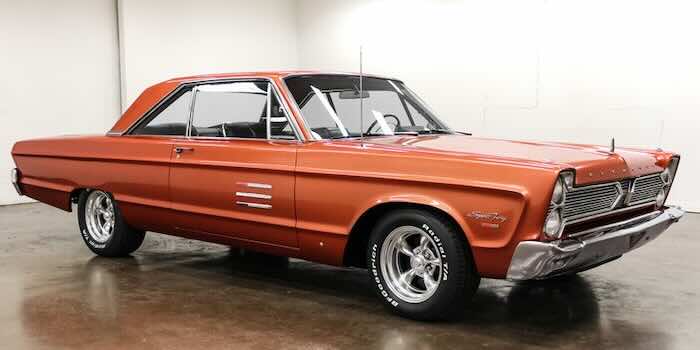By Dr. Bruce Smith ——Bio and Archives--April 14, 2024
HeartlandLifestyles | CFP Comments | Reader Friendly | Subscribe | Email Us

I was blessed with two older brothers, and they were a few years ahead of me. I watched them often and learned a great deal that I didn’t have to learn on my own. From time to time however, they learned things the hard way. Their experiences affected my own. On one particular occasion the younger of my brothers gave me a lesson I’ve never forgotten.
He was always the gear head in the family. During his early high school years he surprised us all when we discovered that he was already the owner of a flat black ’55 Chevy two door. It came with a 248cid V-8 and a four barrel carburetor. He especially surprised the folks, who knew nothing about it. There was a succession of others after that, mostly ’55, ’56, and ’57 Chevys, all two doors, and all exciting, more or less fast, (way too fast for our mother), and the stuff of legend in my mind, at least. There was a rural local spot with a flat quarter mile called simply “between the hills” featuring painted start and finish lines. We went there a time or two, and that’s where I saw him demonstrate how to run a fast drag race power shifting through the gears of the manual transmission.
I did some early driving behind the wheel of a huge golden brown ’58 Chevy Impala 2-door when I was maybe 13. Driving on the narrow, hilly roads near our house, I didn’t really know where my corners were, but I knew they were way out there. The car felt like it was about thirty feet long and about twelve feet wide. A couple of other drivers thought I should make more effort to stay in my lane, but the middle was much more comfortable to me. I liked that car. It didn’t require a key. I could just turn the switch where the key was supposed to go and it would start and run. Interesting!
Because his nickname for me was The Miser, he offered to go together to buy cars with my money, fix them up with his help, then resell them, splitting the profits. We had a ’56 Chevy, a ’58 Chevy, and a ’57 Triumph TR3, in turn. Naturally, when my mom wasn’t around, I got to drive them out in the countryside. The TR3 seemed to sit about 10 inches above the ground with a barely padded seat that placed one’s backside about 11 inches above the ground when driving. Sitting at a light with another car alongside, all I could see was the middle of a door panel. It came with wire wheels and dual carburetors that produced about 95 horsepower from the four cylinder engine. I don’t remember any seat belts. With a stiff manual transmission and clutch and brake pedals about the size of silver dollars, it was a heady experience for a boy who would not be able to drive legally for a few more years. They don’t make them like that any more
He let me drive his last ’57 Chevy, newly painted, with a new 283 auto in it on a memorable date in 1968. Not sure why he trusted me with it, but I brought it back unscathed.
I knew from his model of the Visible V-8 Engine how things worked under the hood. Any engine is a marvel with everything geared and belted together with split second precision to produce smooth power. The water pump circulated coolant through the jacket and into the radiator where it was cooled and sent back to the engine and back again to the radiator, over and over. If the coolant stopped in place for more than a few seconds, as when the thermostat failed, the radiator would boil over, sending clouds of steam back against the firewall and up over the windshield. The piston rings and the cam ran with continuous lubrication sprayed on them by the oil pump to reduce friction to nearly nothing. Down in the pan the rods grasped main bearings surrounding the crankshaft, all continuously immersed in their bath of Pennzoil or Valvoline.
Support Canada Free Press


My brother was usually a Chevy guy because, as he told me, parts were cheaper and more available. He loved the high-revving 283s and 327s Chevrolet offered beginning in 1957 and 1962. About 1969 or 1970, however, he came over one day with a stunning ’66 Plymouth Sport Fury. The years 1965 to 1967 were remarkable ones for the Chrysler brands. In my view, there has never been a more beautiful roofline and rear support than the Plymouths and Dodges from those years. The lines were straight, spare, and elegant. From every angle this burnished copper beauty proclaimed muscle car. Its forward leaning headlights made it look fast when parked. It came factory-equipped with a 383 cid engine producing 330 hp and a four-speed manual transmission on the floor where it ought to be. There was a tachometer in the console in front of the shifter. Sitting in the bucket seats with all windows rolled down, I can still hear the quiet, confident power it exuded even at an idle.
I’m not sure when I first heard about the incident that spawned this lesson. He eventually gave me the complete version himself after the fact. He had gone to nearby New Paris, Ohio, to a restaurant called the Lamp Post, always known colloquially as simply The Post. Ohio was a favorite destination for teens because it was there that 3.2% beer was available at an earlier age than in Indiana. My brother was well past the age when he needed to go to Ohio for beer, but it was an old haunt for him. When he left The Post that night, having parked behind the restaurant, he started the Plymouth and came around a corner to make the parade pass on the main drag in front of the place on the way out of town. I wasn’t there, but I can picture the competitive look that came across his face when he juiced the big V-8 and shot off northward. He says it wasn’t two seconds after he stood on it that he saw the cop sitting in a car to one side.
What to do? He was young and had a head start, so he kept going, turning southwest toward our hometown of Richmond, Indiana, speed shifting through the gears to the tune of the 383 breathing plenty of hot exhaust. It was less than two miles to the state line, and less than seven miles all the way to the center of Richmond.
He was a skilled driver. He knew how to accelerate through turns and get the most out of the considerable horsepower available to him. Not far out of New Paris there was a railroad track that crossed the state highway.
There wasn’t much of a bump, but at the speed he was making by then, it lifted the nimble Plymouth up, coming down on the far side with the soft suspension of those days. The drain plug on the oil pan was in the front. When the car came down across the track the pan came down onto the pavement at speed and pulled the drain plug down just enough to open a crescent-shaped opening above it. The plug was still intact, but he began to leak oil in a serious fashion. The cop behind him (probably quite a ways behind him, I like to think) may have seen the oil on the road, but whether he did or not, he kept coming, crossing the state line in pursuit of the sleek Plymouth with my brother at the wheel. I also like to think that he might have outrun the cop, but after running another couple of miles, the oil light came on the dash. He had a decision to make, and very little time to make it. If he continued his flight and the light was a false alarm, he might get away with it. If the light wasn’t a false alarm and he kept going, he risked burning up the bearings and the rings and causing the engine to seize. If that happened, the engine would be ruined, costing him plenty. He had one other option. He could pull over and shut the engine off, be caught, and suffer the consequences. If he chose this option quickly, he might well save the engine and require nothing but a costly major overhaul, replacing the bearings and saving the car to roar to life another day.

He made up his mind, then quickly pulled over along the side of the road. The cop slid in behind him on the shoulder.
A couple of days later he came by the house where we had shared a room before he married and moved out. I knew the gist of the story by then, and I knew about the railroad track and the oil leak. He said he wanted to show me something. I said, “Sure.” I don’t recall what he was driving that day, but it wasn’t the coppery Plymouth. We rode a few minutes over to Philhower’s Gulf station on National Road east where he pulled into the lot and parked. The Plymouth was in one of the bays, but with the hood down. My brother told me to come over to the side, and I did. An oil pan was sitting to one side with about an inch of oil still in it.
“Stick your finger down there and wipe the bottom of the pan,” he said. I did as he instructed me, pushing my index finger down into the oil to the bottom, drawing it across maybe an inch, then lifting it out. My finger dripped golden motor oil, but on the end of it was a thick coating of gray mud-like residue. I looked at him, not understanding. He simply said, “That’s the bearings.”
It hit me like a crack on my head. Many things became clear to me in that instant and in the years that followed.
I always knew that you had to keep oil in a car engine, but suddenly I knew what would happen if you didn’t. I understood immediately. If for any reason at all the oil light came on or the oil pressure gauge dropped off toward zero, it had to be shut down, and fast. When the light came on that night speeding west away from New Paris, he knew he had to make a decision. The light stayed on, and he pulled it over and shut it off. He would just have to take his lumps, and he did. His lumps taught me a great lesson.
He was and still is a kind brother, the best. I learned a great deal from him when he didn’t know I was watching him. Love ya, Bro. Thank you.
View Comments
Dr. Bruce Smith (Inkwell, Hearth and Plow) is a retired professor of history and a lifelong observer of politics and world events. He holds degrees from Indiana University and the University of Notre Dame. In addition to writing, he works as a caretaker and handyman. His non-fiction book The War Comes to Plum Street, about daily life in the 1930s and during World War II, may be ordered from Indiana University Press.